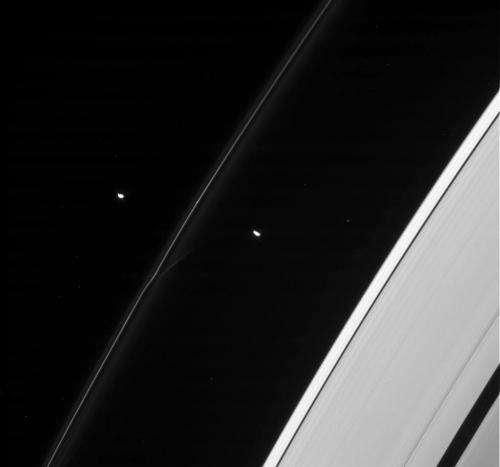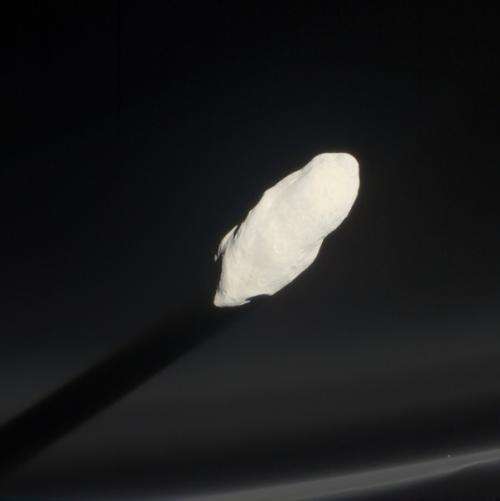Raw Cassini image acquired on Dec. 18, 2012. Credit: NASA/JPL/SSI
Two of Saturn's shepherd moons face off across the icy strand of the F ring in this image, acquired by the Cassini spacecraft on December 18, 2012.
In the left corner is Pandora, external shepherd of the ropy ring, and in the right is Prometheus, whose gravity is responsible for the subtle tug on the wispy ring material. (Please don't blame the moon for any recent unsatisfying sci-fi films of the same name. There's no relation, we promise.)
Similar in size (Pandora is 110 x 88 x 62 km, Prometheus 148 x 100 x 68 km) both moons are porous, icy, potato-shaped bodies covered in craters—although Prometheus' surface is somewhat smoother in appearance than Pandora's, perhaps due to the gradual buildup of infalling material from the F ring.
Check out some much closer images of these two moons below, acquired during earlier flybys:
Here's Pandora, as seen by Cassini on September 5, 2005:
False-color image of Pandora. Credit: NASA/JPL/SSI
…and here's Prometheus, seen during a close pass in 2010 and color-calibrated by Gordan Ugarkovic:
Prometheus casting a shadow through F ring haze. Credit: NASA/JPL/SSI/Gordan Ugarvovic
The external edge of the A ring with the thin Keeler gap and the wider Encke gap can be seen at the right of the top image. Both of these gaps also harbor their own shepherd moons—Daphnis and Pan, respectively.
These moons keep their gaps clear, as well as maintain the crisp edge shapes of the nearby rings—hence the term "shepherd."
Source: Universe Today


























